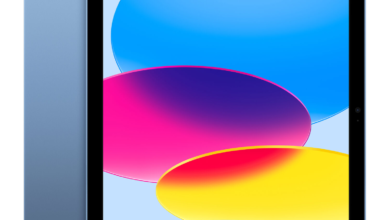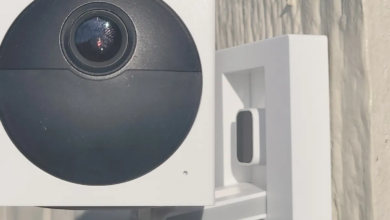How to Choose the Right VR Headset for Your Business

Choosing the right VR headset for your business is a crucial decision in today’s tech-driven world. VR technology has evolved rapidly, and it offers a myriad of opportunities for enhancing various aspects of your business operations. Whether you’re considering immersive training simulations, virtual meetings, or innovative marketing strategies, selecting the appropriate VR headset can significantly impact your company’s success. In this guide, we will explore the key factors and considerations you should keep in mind when deciding which VR headset aligns best with your business needs.
Choose the Right VR Headset for Your Business
As businesses increasingly embrace the possibilities of virtual reality, understanding the nuances of VR headset options becomes essential. Factors such as compatibility, performance capabilities, cost-efficiency, and specific use cases are all vital elements to evaluate when making this decision. In the following sections, we will delve deeper into these aspects and provide valuable insights to help you make an informed choice and unlock the full potential of VR technology for your business.
Define Your Business Goals and Use Cases
VR Headset for Your Business: Before diving into the world of VR headsets, it’s essential to define your business goals and specific use cases for VR technology. Consider the following questions:
- What is the primary purpose of integrating VR into your business operations?
- What specific tasks or processes do you aim to enhance or streamline with VR?
- Are you looking to provide VR experiences for your customers, employees, or both?
- What is your budget for VR hardware and software development?
Having a clear understanding of your objectives will guide your decision-making process when choosing the right VR headset.
Read More: The best VR headsets for 2023
Consider the Types of VR Headsets
- VR Headset for Your Business: There are several types of VR headsets available on the market, each with its own set of features and capabilities. The main categories are:
- Tethered VR Headsets: These headsets require a connection to a powerful PC or gaming console. They offer high-quality graphics and immersive experiences but are less portable and more expensive. Examples include the Oculus Rift, HTC Vive, and Valve Index.
- Standalone VR Headsets: Standalone headsets have their computing power built-in, making them more portable and user-friendly. They are a great choice for businesses that require mobility and ease of use. Examples include the Oculus Quest 2 and HTC Vive Focus.
- Mobile VR Headsets: These headsets use a smartphone as the display and computing unit. They are the most affordable option but may offer limited graphical capabilities. Examples include the Samsung Gear VR and Google Cardboard.
- Augmented Reality (AR) Headsets: While not strictly VR, AR headsets like the Microsoft HoloLens blend virtual elements with the real world. They are suitable for businesses focusing on mixed reality experiences.
Your choice of VR headset type should align with your business goals and use cases. Tethered headsets are ideal for high-end experiences, while standalone and mobile headsets offer mobility and accessibility.
Evaluate Hardware Specifications
VR Headset for Your Business: When choosing a VR headset for your business, it’s crucial to assess the hardware specifications to ensure they meet your requirements. Key factors to consider include:
- Display Resolution: Higher resolution displays provide clearer and more immersive visuals. Look for headsets with at least 1440×1600 pixels per eye or higher for a premium experience.
- Field of View (FoV): A wider FoV enhances immersion. Consider headsets with FoVs around 100 degrees or more.
- Refresh Rate: A higher refresh rate (e.g., 90Hz or 120Hz) reduces motion sickness and improves overall comfort.
- Tracking System: Accurate tracking is vital for a seamless VR experience. Inside-out tracking (cameras on the headset) and external sensors (lighthouses) are common methods.
- Audio Quality: Integrated headphones or audio solutions can enhance the overall experience. Ensure the headset offers high-quality spatial audio.
- Comfort and Ergonomics: Consider the design and weight of the headset, as well as adjustable straps and comfort features for extended use.
- Durability: If the headset will be used in a commercial setting, durability and build quality are essential to withstand frequent use.
- Interactivity: Some headsets come with controllers or hand-tracking capabilities. Assess if these are necessary for your use cases.
Software Ecosystem and Compatibility
VR Headset for Your Business: The software ecosystem plays a significant role in the VR experience. Different headsets may have exclusive content or partnerships with specific software developers. Consider the following factors:
- Operating System: Check the compatibility of the headset’s operating system with your existing software and tools. Oculus headsets, for instance, use Oculus Home, while others may run on SteamVR or custom platforms.
- Content Availability: Assess the availability of VR applications and software relevant to your business needs. Some platforms may have a more extensive library of applications than others.
- Custom Development: If your business requires custom VR applications, consider the availability of development tools, SDKs, and developer support for the chosen headset.
- Licensing and Integration: Ensure that the chosen headset can seamlessly integrate with your existing software infrastructure and licensing agreements.
Budget and Total Cost of Ownership
VR Headset for Your Business: Budget considerations are crucial when choosing a VR headset for your business. The cost of a VR headset goes beyond the initial purchase price and may include:
- Hardware Accessories: Additional accessories like controllers, base stations, and extended cables may be required.
- Software Licensing: Some applications and VR development tools come with licensing fees.
- Maintenance and Support: Consider ongoing costs for maintenance, warranty, and technical support.
- Training and Deployment: Factor in the cost of training employees and deploying VR systems within your organization.
- Upgrades and Expansion: Plan for future hardware upgrades or expanding your VR deployment.
While cost is a significant factor, it’s essential to strike a balance between your budget constraints and the quality of the VR experience you aim to deliver.
User Comfort and Safety
VR Headset for Your Business: The comfort and safety of users should be a top priority when selecting a VR headset for your business. Consider the following aspects:
- Fit and Adjustability: Look for headsets with adjustable straps and cushioning to ensure a comfortable fit for a wide range of users.
- Hygiene: In commercial settings, consider hygiene factors like removable and washable face cushions to maintain cleanliness.
- Motion Sickness: Test the headset’s comfort and motion sickness factors, especially if users will engage in extended VR sessions.
- Safety Features: Some headsets offer built-in safety features like boundary systems to prevent users from walking into obstacles.
- Accessibility: Ensure that the headset is accessible to users with different physical abilities and comfort levels.
- Eye Strain: Extended VR use can lead to eye strain, so consider implementing usage guidelines and breaks.
Support and Warranty
VR Headset for Your Business: Reliable support and warranty options are essential when integrating VR technology into your business. Consider the following:
- Warranty Coverage: Check the warranty period and coverage details for the headset and any included accessories.
- Technical Support: Assess the availability and quality of technical support services, including response times and troubleshooting assistance.
- Software Updates: Ensure that the headset manufacturer provides regular software updates and maintenance to address potential issues.
- Community and User Forums: Online communities and forums can be valuable resources for finding solutions to common problems.
Scalability and Future-Proofing
VR Headset for Your Business: As your business evolves, so should your VR deployment. Consider the scalability and future-proofing of your chosen VR headset:
- Compatibility with Future Hardware: Ensure that your VR headset can adapt to future hardware advancements or accessories.
- Software Upgrades: Check if the headset manufacturer offers a clear roadmap for software upgrades and compatibility with upcoming VR technologies.
- Expandability: Assess whether your chosen VR headset can easily accommodate additional units or accessories as your business grows.
- Interoperability: Consider the ability to integrate VR technology with other emerging technologies like augmented reality or mixed reality.
User Training and Onboarding
VR Headset for Your Business: Implementing VR technology within your business may require training for employees or customers. Evaluate the availability of training resources and consider the ease of onboarding users onto the VR platform.
- Training Materials: Check if the headset manufacturer provides training materials, tutorials, and documentation to facilitate user adoption.
- Ease of Use: Choose a user-friendly headset interface that minimizes the learning curve for new users.
- Onsite Support: If necessary, explore the option of having onsite support during the initial rollout of VR technology.
Regulatory Compliance
VR Headset for Your Business: Depending on your industry and location, there may be regulatory requirements and safety standards that your VR headset must meet. Ensure that your chosen headset complies with relevant regulations and standards to avoid legal and safety issues.
User Feedback and Pilot Programs
VR Headset for Your Business: Before making a final decision, consider conducting pilot programs and gathering user feedback. This will help you understand how well the chosen VR headset aligns with your business goals and user preferences.
- Pilot Testing: Implement a small-scale VR deployment within your business to assess usability, user satisfaction, and any unforeseen challenges.
- User Feedback: Collect feedback from users during pilot testing to identify areas for improvement and customization.
- Iterative Approach: Be prepared to iterate on your VR deployment based on user feedback and evolving business needs.
Case Studies and Industry Examples
VR Headset for Your Business: Reviewing case studies and examples from your industry or similar businesses can provide valuable insights into how VR technology has been successfully implemented. Learn from the experiences of others to make informed decisions.
Making the Final Decision
VR Headset for Your Business: After considering all the factors mentioned above, you can make an informed decision about the right VR headset for your business. Keep in mind that there may not be a one-size-fits-all solution, and you may need to mix and match different VR headsets for various use cases within your organization.
Read More: How to Use Data Visualization for Business Insights 2023
Conclusion
Choosing the right VR headset for your business is a significant decision that requires careful consideration of your objectives, hardware specifications, software ecosystem, budget, user comfort, and support options. By following the steps outlined in this guide and staying informed about the latest developments in VR technology, you can make a choice that aligns with your business goals and positions you for success in the immersive world of virtual reality.
Why should my business consider using VR technology?
VR technology can enhance various aspects of your business, such as training, product design, customer experiences, and marketing. It can improve engagement, learning outcomes, and collaboration among employees or with customers.
What factors should I prioritize when choosing a VR headset for my business?
Key factors to prioritize include your business goals, use cases, hardware specifications, budget, software ecosystem, user comfort, and support options. Consider how these factors align with your specific needs.
What types of VR headsets are available for businesses?
VR headsets fall into several categories, including tethered, standalone, mobile, and augmented reality (AR) headsets. The choice depends on your business requirements, such as mobility and graphical fidelity.
How do I determine the right display resolution for my VR headset?
The display resolution should be high enough to provide a clear and immersive experience. Look for headsets with at least 1440×1600 pixels per eye or higher for premium visual quality.
What is the significance of the field of view (FoV) in VR headsets?
A wider FoV enhances immersion by expanding the visible area in the virtual environment. Look for headsets with FoVs around 100 degrees or more for a more immersive experience.











